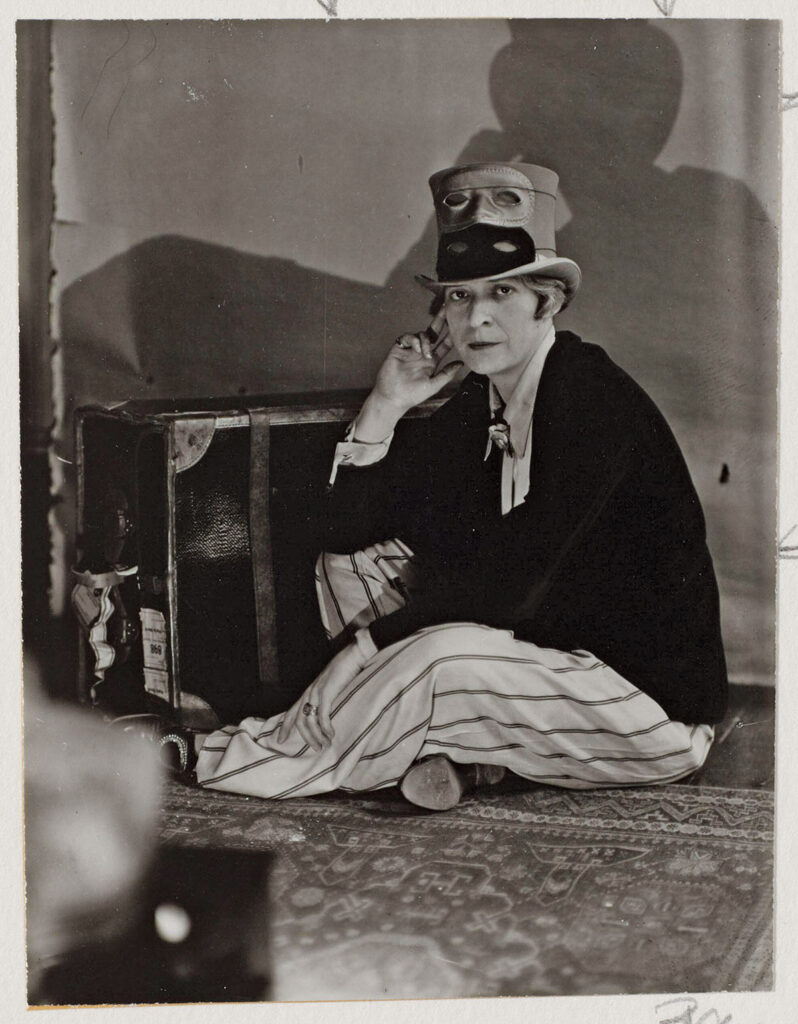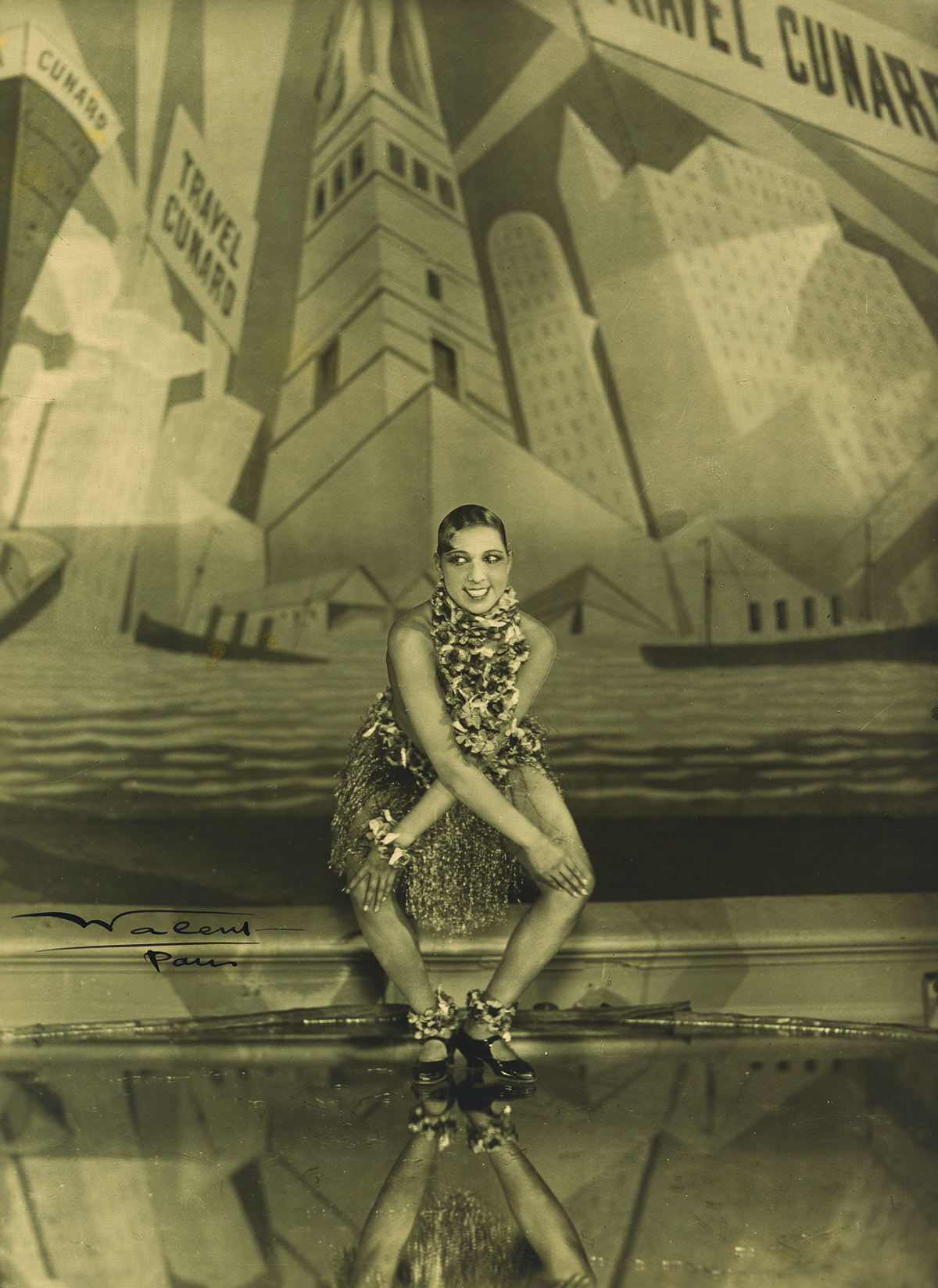Reborn in the City of Light
At a time when Paris was an incubator of modernism, a group of bold American women arrived to make art out of their lives

In 1935, Berenice Abbott was photographing scenes for her monumental collection Changing New York when a male bureaucrat at the Federal Art Project admonished her. “Nice girls” didn’t venture into rough neighborhoods like New York City’s Skid Row, he said.
“Buddy, I’m not a nice girl,” the 37-year-old Abbott snapped back. “I’m a photographer … I go anywhere.”
Abbott is among an extraordinary array of “not-nice girls” whose work is now on display at the National Portrait Gallery in Washington, D.C., in an exhibition titled “Brilliant Exiles: American Women in Paris, 1900–1939.” The works suggest the dramatic differences among these expatriate American artists, writers, and performers who found their way to Paris from the turn of the century to the outbreak of World War II. Only some of these women—Black and white, straight and queer, wealthy and barely scraping along—knew one another, and each brought her own story to the city of art. But they had in common a fierce desire for freedom: from sexual repression, from racism, from the stifling social conventions they experienced to varying degrees at home. Abbott herself discovered her gift as a photographer making portraits of her contemporaries in Paris. “We were completely liberated,” she declared years later.
The artists range from African Americans like Loïs Mailou Jones and Nancy Elizabeth Prophet, who were free to exhibit in the Paris Salon but lived in straitened circumstances, to white heiresses like Natalie Barney and Romaine Brooks. The exhibition also shows the importance of formal groups: Barney’s salon on the rue Jacob, with its tucked-away garden and classical “temple of friendship,” attracted a glittering company of artists and intellectuals (not all of them women, though Barney’s writing and publicized love affairs made it clear that she had created a cult site for the celebration of lesbian love). The salon of Gertrude Stein and Alice B. Toklas on the rue de Fleurus set a more sober tone, as revealed in Man Ray’s photograph of the two women surrounded by their art collection; that cult was dedicated to the most exacting experiments in modern art: the paintings of Paul Cézanne, Pablo Picasso, Georges Braque, Henri Matisse, and Juan Gris. “No American writer is taken more seriously than Miss Stein by the Paris modernists,” wrote Janet Flanner, who, under the pen name Genêt, became the recording angel of her peers’ artistic exploits in The New Yorker’s “Letters from Paris” from 1925 to 1975. Sylvia Beach’s visionary bookshop Shakespeare and Company provided yet another refuge where French and American writers could gather, becoming legendary when Beach published James Joyce’s Ulysses in 1922. Stein described the lure of Paris in her story “Miss Furr and Miss Skeene,” based on the artists Ethel Mars and Maud Hunt Squire: “They were in a way both gay there where there were many cultivating something”—one of the earliest uses of gay to suggest homosexuality. Paris gave all these women a space where they could reinvent themselves and “cultivate something.”

Josephine Baker, 1926. Stanislaw Julian Ignacy Ostroróg, known as Walery (1863–1929). Gelatin silver print, 8 ¾ × 6 ⅜ inches. National Portrait Gallery, Smithsonian Institution.
The spectacularly elastic singer and dancer Josephine Baker brought her own electrifying revolution to Paris in 1925, when she was just 19 years old. When Flanner wrote about Baker in one of her first “Letters,” she hardly knew what to make of the performer. In 1972, Flanner did penance for this incomprehension in the introduction to her book Paris Was Yesterday:
[Baker] made her entry entirely nude except for a pink flamingo feather between her limbs; she was being carried upside down and doing the split on the shoulder of a black giant. Midstage he paused, and with his long fingers holding her basket-wise around the waist, swung her in a slow cartwheel to the stage floor, where she stood, like his magnificent discarded burden, in an instant of complete silence. She was an unforgettable female ebony statue. A scream of salutation spread through the theater.
Baker almost steals the exhibition, so striking is her presence in the portrait by Walery, the pochoir lithograph by Paul Colin, the watercolor by José María Escacena, and other lively photographs and posters. In Walery’s picture, she’s dancing the Charleston, crossing her arms over her legs in the “bee’s knees” maneuver, her body’s geometry echoed in the Art Deco backdrop of skyscrapers and ocean liners, her smile a delirious triangle. Baker’s remarkable life story extends beyond the bounds of the exhibition. She danced across Europe, spied for the French Resistance during World War II, addressed the crowd at the March on Washington in 1963, was awarded the Croix de Guerre and the Légion d’honneur, and was inducted into Le Panthéon in a symbolic coffin (her body remains buried in Monaco).
Login to view the full article
Need to register?
Already a subscriber through The American Scholar?
Are you a Phi Beta Kappa sustaining member?
Register here
Want to subscribe?
Print subscribers get access to our entire website Subscribe here
You can also just subscribe to our website for $9.99. Subscribe here
true


